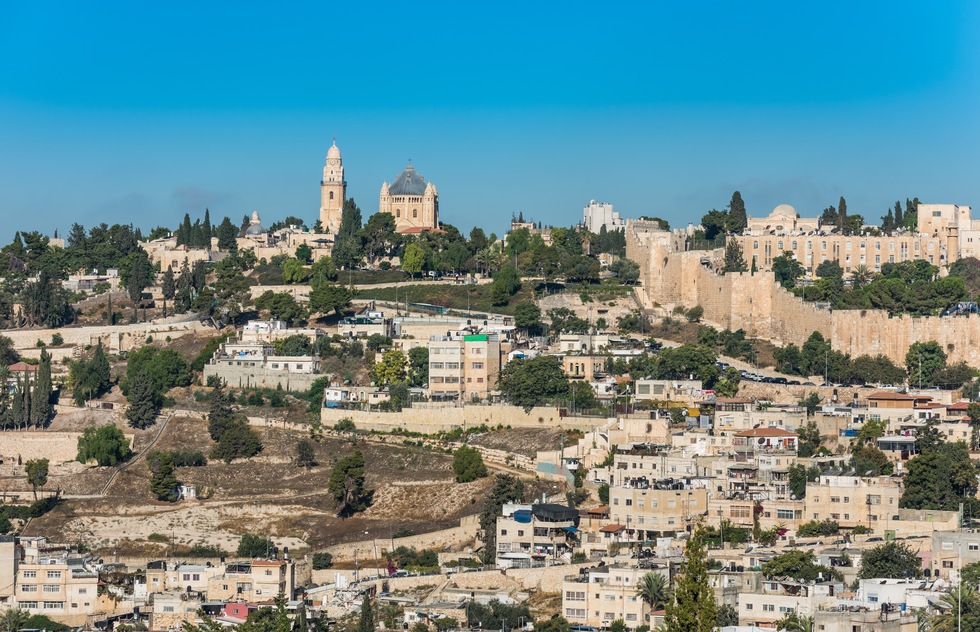Mount Zion as a Sacred Space
To call a place sacred takes nothing more than for people to assign a specific location as “different” or “special”. Sacred and holy spaces are often thought of as places of religious importance, but this religious or “holy” experience does not have to be associated with what people usually think of when they hear the term “religion”. In Eliade’s book “The Sacred and Profane” he refers to sacred spaces as “privileged places, qualitatively different from all others” and then goes on to name places such as “a man’s birthplace, or the scenes of his first love, or certain places in the first foreign city he visited in youth.” (Eliade 1957, page 24). This proves that although religious centers and holy places are the typical examples of a sacred space, these are not the only places that can have higher meanings.
Although it may not look like much as of today, Mount Zion, a hill just outside the walls of the Old City in Jerusalem, has been established as a sacred space of great importance to the people of Jerusalem to this day although it is now referred to as Ophel. Biblical texts indicate that Mount Zion was the city which King David conquered from the Jebusites in the 10th BCE and where he established Jerusalem as the capital of his city (Gaskill 2023). Over time, Mount Zion established a sacred meaning to people of many different religions and belief systems. Christians view Mount Zion as the site of the Last Supper of Jesus. Additionally, “Mount Zion became a place of vision for the people of Israel” and “once the Israelites arrived in Jerusalem, Yahweh was linked to Baal El Elyon, who almost certainly worshiped on Mount Zion” (Armstrong 1996, page 29-30). All of these people have established a history that gives significance to Mount Zion, making this much more than just a hill. Mount Zion is a holy space worth being respected by many.
It is believed that “in its natural state, Mount Zion may have stood out dramatically from the surrounding hills in such a way that it seemed to embody the sacred ‘other’ and marked the place out as holy’” (Armstrong 1996, page 9). These physical features may have also contributed to the meaning that is associated with Mount Zion, but the maintenance of this level of sacredness has been through the learned history and beliefs of the people. In its present state, Mount Zion’s shape and size is covered by a platform housing the Jewish Temple, so it is currently hard to see anything more than a rise in elevation when looking at this sacred hill today. Although Mount Zion may not have maintained its natural beauty, this goes to show that people will attribute religious or sacred meanings to spaces that they have only heard or been taught about, and the loss of impressive appearance will not make a space any less sacred.
Ultimately, Mount Zion is just one of many examples of physical locations in Jerusalem that hold significant meaning to people living there and to other people all around the world who associate with religions or groups that give sacred meaning to these places. Physically, a hill may seem like an odd place to call sacred, but once one learns about the history associated with a hill like Mount Zion, it is easy to understand why this place may make people feel closer to their gods or why they may view this place as one worth respecting.
Armstrong, Karen. Jerusalem: One City, Three Faiths. Ballantine Books, 1997.
Eliade, Mircea. The Sacred and the Profane: The Nature of Religion. Harvest, 1957.
Gaskill, Alonzo L. “Mt. Zion - Patheos Sacred Spaces.” Patheos, Patheos Explore the world’s faith through different perspectives on religion and spirituality! Patheos has the views of the prevalent religions and spiritualities of the world., 21 Nov. 2023, www.patheos.com/sacred-spaces/mt-zion.
Image - https://www.frommers.com/system/media_items/attachments/000/869/515/s980/Mount_Zion__Jerusalem.jpg?1664556474


Nice blog post dealing with the sacredness of Mt. Zion as presented in Eliade, Armstrong and an outside source.
ReplyDeleteClarification: Mt. Zion today is the name of a place outside of the old city walls, so today it doesn't include a platform with the Jewish Temple. A location named the Temple Mount (from a Jewish perspective) does exist within the old city, but there is no longer a temple on the platform; the platform now includes the Dome of the Rock and the Al-Aqsa Mosque (and is called Haram Al-Sharif from a Muslim perspective).